Introduction: In this article, Gena Philibert-Ortega writes about the family history information and clues grave markers provide. Gena is a genealogist and author of the book “From the Family Kitchen.”
As a genealogist, you’ve seen lots of gravestones. My guess is that you don’t pass many cemeteries as you drive through a city. Gravestones can provide vital information for our research, and if we are lucky, they provide us more than just a name and death date. They may include facts such as a birth date, family relationship, and even an occupation. In some cases, there may be more marking the burial than just the gravestone itself, such as a variety of grave markers.
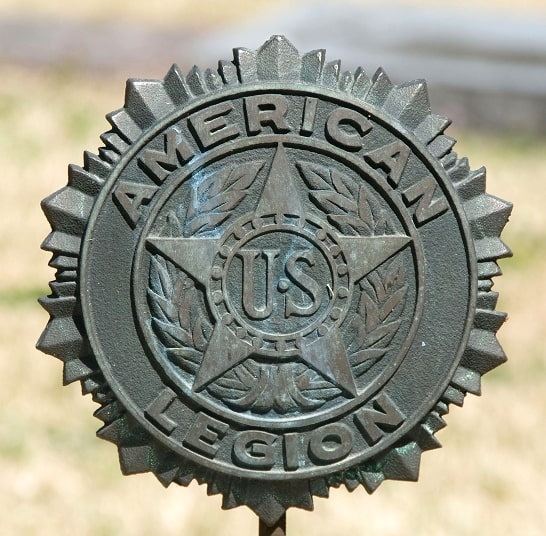
Grave Markers
The grave markers I am referring to are in addition to a gravestone. Made of metal or plastic, grave marker emblems may be attached to a rod that allows you to place it in the ground near the gravestone, or they may have an adhesive back that adheres to the gravestone itself. (1)
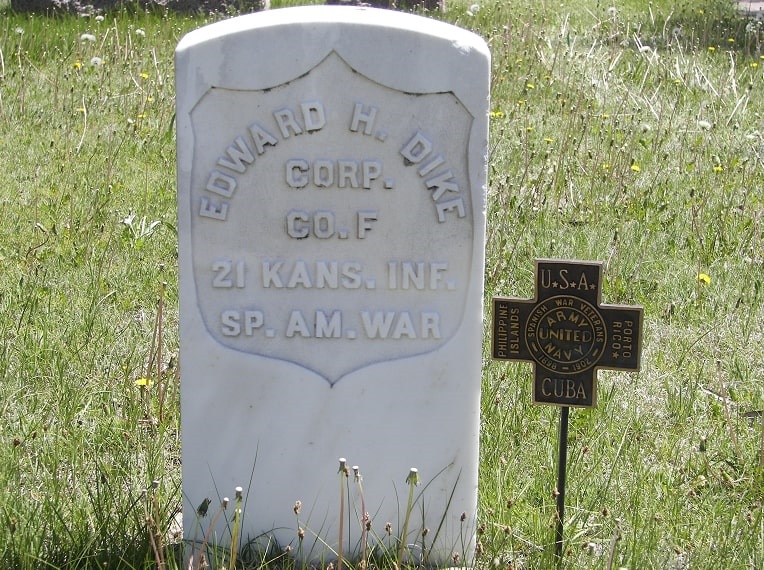
Grave markers provide information about the person that might include:
- Fraternal order membership (such as Masons, Oddfellows, and auxiliaries)
- Lineage society membership (DAR, DUP)
- Organization membership (American Legion, Boy Scouts, Veterans of Foreign Wars)
- Occupation (policeman, fireman, railroad worker)
- Historical event (September 11th, pioneer to an area)
- Military service (participation in a war, POW, branch of military)
Basically, these markers provide the researcher information about what the person was involved in – that in turn can lead to more records.

What Do These Markers Add?
Obviously, these markers provide additional information such as organizational membership. But think of what else one seemingly simple grave marker tells us.
A Daughters of the American Revolution marker indicates that the deceased was a member of the DAR, which means they had a Revolutionary War patriot ancestor. That in turn leads to records. Looking for the member’s DAR application is a start that should be followed up with military and pension records for their ancestor (in the case of a military-serving patriot).
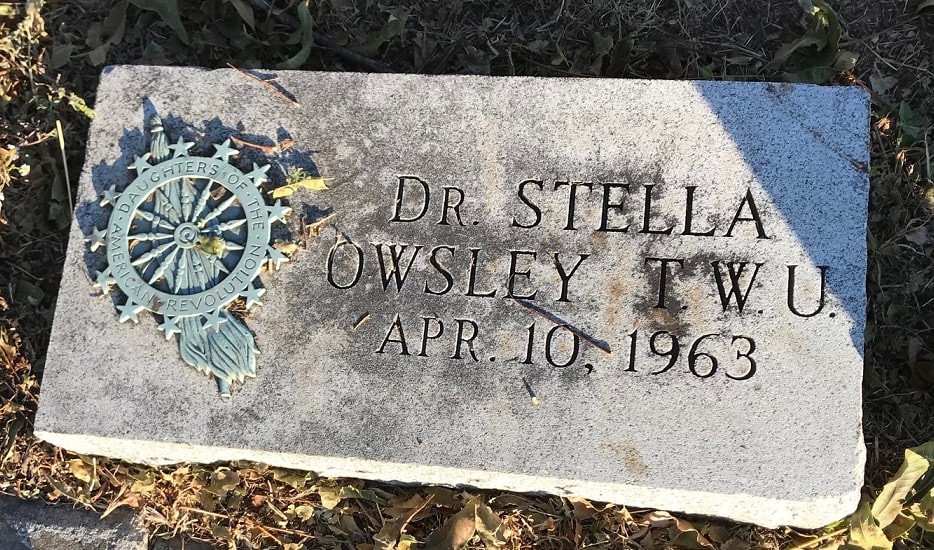
Just as the DAR marker hints at ancestral relationships, markers can provide clues to family members – like this American War Mothers marker.
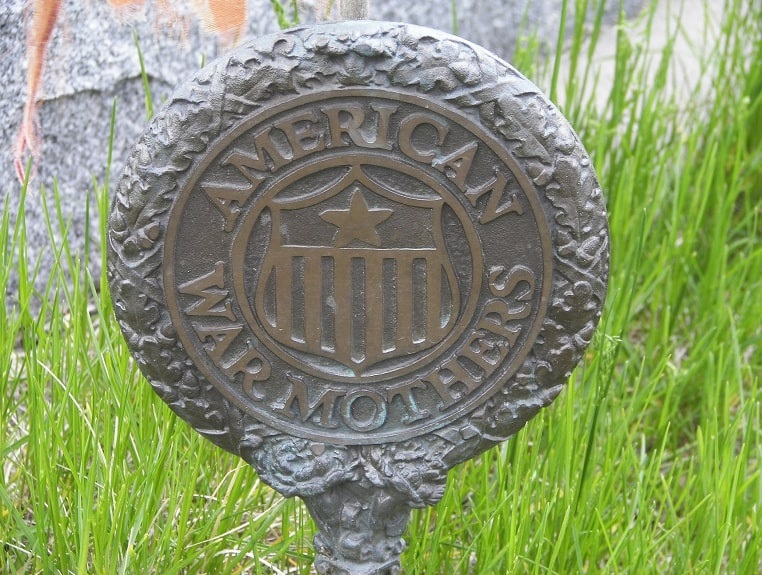
This marker indicates that the deceased was the mother of an adult child serving in World War I or a later war. This in turn is a reminder to find that adult child’s name and order military records. Keep in mind that other markers exist for women who participated in auxiliaries to fraternal and membership organizations that their male relatives belonged to.
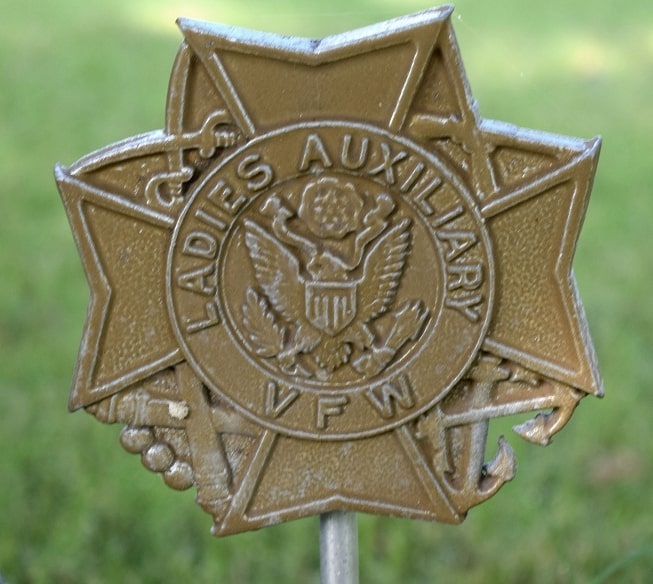
If you come across an emblem that you are not familiar with, use Google Image search to find it.
This next marker, signifying a member of the Independent Order of Odd Fellows, might not be obvious because it shows the letters FLT and not IOOF. But the Odd Fellows symbol of three interlocking chains is a clue, and the FLT stands for Friendship, Love, and Truth.
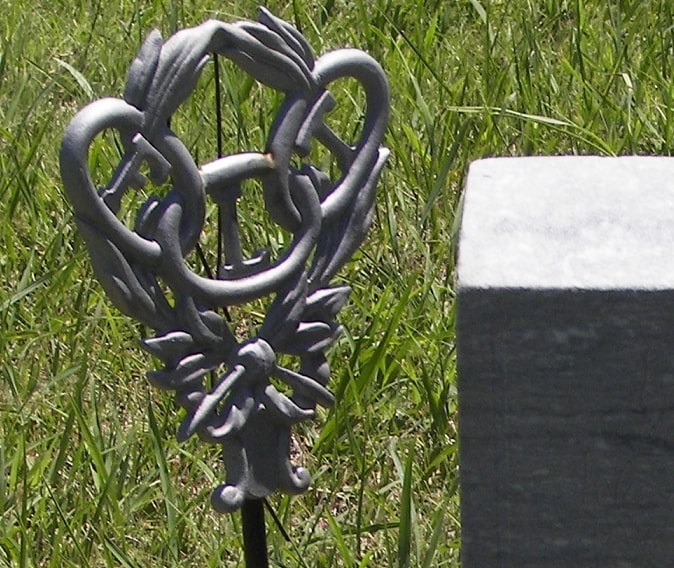
Grave markers might indicate not just membership in an organization, but participation in a historical event. For example, this metal adhesive marker can be found on graves of Mormon pioneers who arrived in the Salt Lake Valley (Utah) prior to completion of the railroad (pre-1869). They were sold for the commemoration of the sesquicentennial of the arrival of the pioneers in 1847 by the National Society of the Sons of the Utah Pioneers. (2)

The International Society Daughters of Utah Pioneers (DUP) sells a headstone medallion that can be placed on the grave of a member. (3) Members of DUP are those who descend from a pioneer who arrived in Utah prior to the railroad. (4)
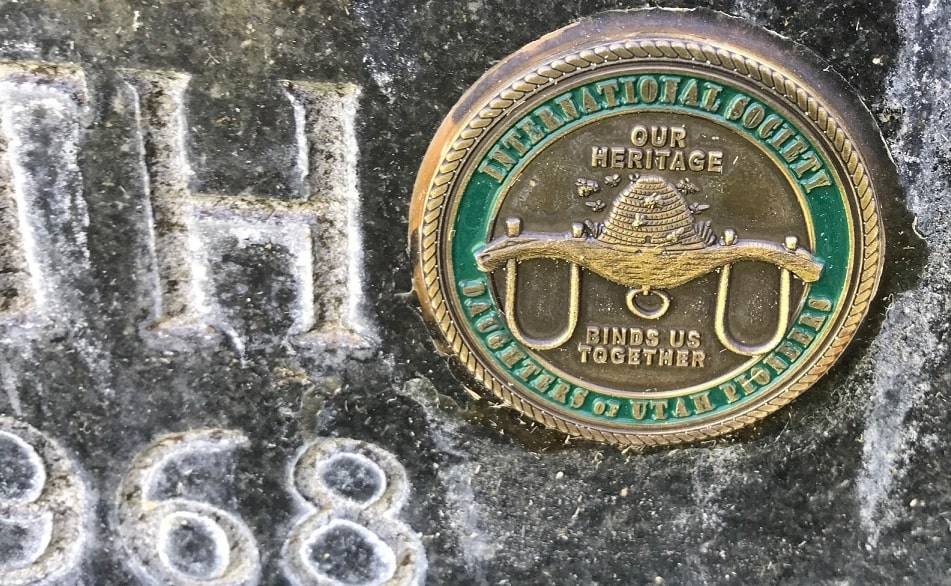
Do Your Homework
Grave markers can be helpful, but remember that you need to verify the information. Because they are made of metal (today, they are also made of plastic), thieves remove them to take to a recycler for money. Those mounted to a rod are easily removable, and may be stolen or moved. So, just because there is a marker, that doesn’t necessarily mean it’s for your person. Always double check the facts.
Most markers are sold by the groups they represent – but in some cases, they are sold by a third-party company. (5) Anyone can buy them and add them to a burial site; another reason to make sure you research the facts.
Study the Entire Burial Site, Not Just the Gravestone
Medallions and grave markers add to the story of our deceased ancestor’s life. In some cases, they augment the information on a gravestone. It’s important that we carefully consider not only what the stone tells us but anything affixed to the stone or beside it. Grave markers also give us the opportunity to leave behind information about an ancestor and should be considered as a way to honor them.
Explore over 330 years of newspapers and historical records in GenealogyBank. Discover your family story! Start a 7-Day Free Trial
_______________
(1) Additional information and photos of grave markers can be found in the Cemetery and Gravestone Handbook for Genealogists & Family Historians by Gary W. Clark. For more information see PhotoTree.com http://phototree.com/.
(2) “Faith in Every Footstep Grave marker,” National Society of the Sons of the Utah Pioneers (https://www.sup1847.com/store/faith-in-every-footstep-grave-marker: accessed 21 July 2021).
(3) “DUP Headstone Medallion Order Form,” International Society Daughters of the Utah Pioneers (http://isdup.org/dyn_file.php?fileToken=TOTLTDWGNK: accessed 21 July 2021).
(4) “Joining International Society Daughters of the Utah Pioneers,” International Society Daughters of the Utah Pioneers (http://isdup.org/dyn_page.php?pageID=19: accessed 21 July 2021).
(5) One company that sells these markers is Gettysburg Flag Works https://www.gettysburgflag.com/military-flags/grave-markers.
Related Article:

Another important thing to note when you’re working in a cemetery is the way family plots are marked off from surrounding graves. If someone with a different surname is buried within a family plot, look for their relationship to the others! Sometimes there will be no relationship at all, as was the case in my great-grandparents’ plot — it had one earlier grave in it because it was purchased by that man, but he had no other family, so the lot was sold to my great-grandparents when their baby died at age 3. Five more family burials and one cremains inurnment have filled the small plot.
Eve, thanks so much for that reminder! I appreciate it.
Thank you for this information. I have never seen this site before and really enjoyed reading it. It is sad that there are people out there that are so low they will steal markers from people’s graves. It breaks my heart to know that.
Carol, thanks so much for reading the article. It is sad that people would steal a marker or gravestone. We need to do a better job of teaching the importance of cemeteries.
This was very interesting and helpful information.
Thanks so much, Willie! I appreciate your kind comments.
I’d like to know what the carving on a particular stone means. My ancestor’s stone in Paris, France, shows a man with a wheelbarrow going to something that looks like a round furnace.
Janice, Good question! Does it have something to do with his occupation?